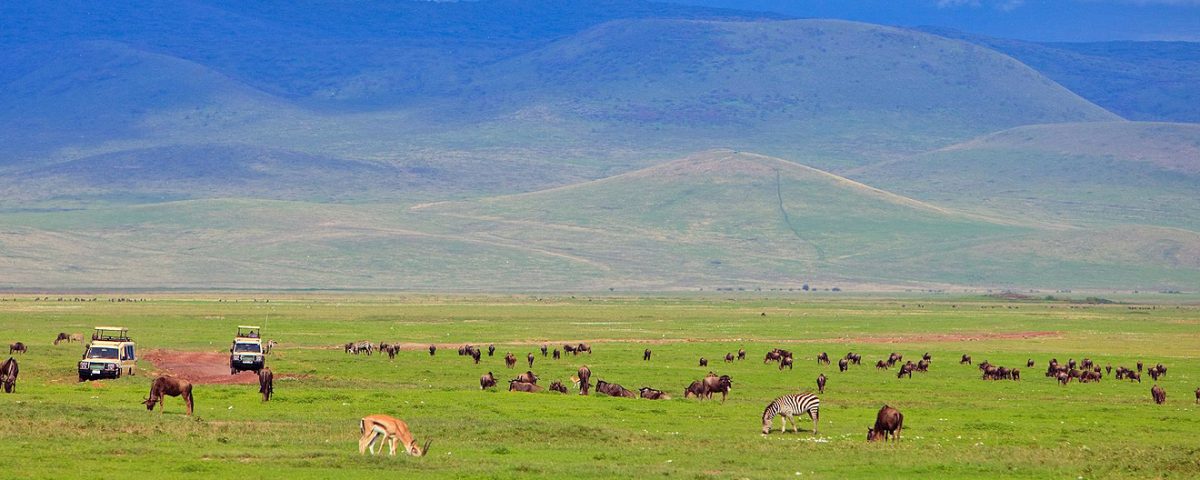``The ‘eighth wonder of the world``

Often referred to as ‘the eighth wonder of the world’ the Ngorongoro Crater is one of Africa’s best-known wildlife arenas. A World Heritage Site, it is also one of the largest volcanic craters in the world (almost 20 kilometres wide, 610-760 metres deep and covering a total area of 264 square kilometres).
Fact File
Area: 8,288 sq kms.
Location: South-east of Serengeti National Park.
Distance from Arusha 180 kms.
Altitude: 1,500-3,600 m.
Vegetation: Montane forests on the outer, steeper slopes of the crater wall. On the crater floor are grassy open plains, swamps and acacia woodland.
Fauna: Large population of ungulates in the crater and high numbers of predators, particularly lion. The only absentees from the usual East African large mammals are the giraffe, impala and female and young elephants.
Birds: Abundant birds include ostrich, kori bustard, Verreaux’s eagle, Egyptian vulture, rosy-breasted longclaw and lesser flamingo.
An utterly unique biosphere, the Crater harbours grasslands, swamps, forests, saltpans, a fresh water lake and a glorious variety of birdlife, all enclosed within its towering walls. Due to its high concentration of wildlife, close-range viewing opportunities and striking scenery it is also Tanzania’s most visited destination.
Wildlife highlights: Quite apart from the ‘big five’ (lion, elephant, rhino, leopard and buffalo), all of whom can often be spotted in a morning, the Crater also hosts up to 25,000 large mammals. Most are grazers, of which zebra and wildebeest comprise almost half, the rest being gazelle, buffalo, eland, hartebeest and warthog. As a result of these extraordinarily large numbers of herbivores, the crater also numbers one of the densest predator populations in Africa, most of which are lion and spotted hyena. Finally, the crater supports a large elephant population, most of which are bulls due to the relative paucity of food for the breeding herds, whilst certain animals such as giraffe, topi and impala, are notable by their absence.
Adjacent Areas of Interest
Karatu
Karatu is a small dusty town in the Northern Highlands of Tanzania. Set pretty on the outskirts south of the Ngorongoro Conservation Area, Karatu is a popular tourist transit enroute to the Ngorongoro Crater and Serengeti National Park from Arusha and Lake Manyara.
Sitting in one of the five districts in the Arusha Region, Karatu town is the headquarters of the district of Karatu. With moderate temperatures and cool weather, the region is agricultural and features vast farms mainly growing coffee.
Karatu is a wealth of natural resources and showcases some awesome wildlife and is a birders’ paradise.
Ngorongoro Crater Lodge, Zara’s Ngorongoro Wild Camp